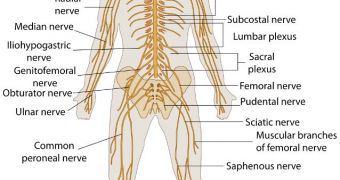In a paper published in a recent issue of the top scientific journal Nature, investigators at the Yale University detail how they were able to create the most exquisite map of neural connections at various stages of human development.
The research was focused on studying how the human brain evolves before birth. In other words, the team wanted to learn how much brain capacity humans have when they leave the womb. The team was surprised at the complexity of the brain at birth, since it defies all previous predictions.
These conclusions were extracted from a genetic analysis that was primarily dedicated to the study of genes previous investigations associated with the development of psychiatric illnesses. In order to understand the link, scientists first had to determine how many genes are in place in the brain before birth.
In order to construct such a tricky survey, the team had to monitor more than 86 percent of the 17,000 genes that are known to be involved in the process of developing the brain, PsychCentral reports.
The thing about this vast number of genes is that they need to work flawlessly individually as well as together, in order to enable the 100 billion neurons in the human brains to form trillions of connections called synapses in the correct patterns.
Many neuroscientists are convinced that the root cause of many neurological disorders, such as autism and schizophrenia, lies within the patterns in which genes turning on and off control neural development during the earliest stages of human development.
As they focused on genes involved in this sensitive process, the team also monitored the way in which they were expressed and activated. “The complexity of the system shows why the human brain may be so susceptible to psychiatric disorders.” research scientist Nenad Sestan, MD, PhD, explains.
“We knew many of the genes involved in the development of the brain, but now we know where and hen they are functioning in the human brain,” the investigator goes on to say. He adds that the team used about 1,300 tissue samples for 57 individuals to conduct the research.
Those who donated samples are aged from 40 days after conception to 82 years old. Together, these participants created a database featuring no less than 1.9 billion data points for the team to analyze.
“We found a distinct pattern of gene expression and variations prenatally in areas of the brain involving higher cognitive function. It is clear that these disease-associated genes are developmentally regulated,” Sestan explains.

 14 DAY TRIAL //
14 DAY TRIAL //